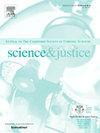在法医语音比对中平衡有效性和可靠性,因为取样存在差异
IF 1.9
4区 医学
Q2 MEDICINE, LEGAL
引用次数: 0
摘要
在法医比对科学中,专家需要对已知和未知来源的样本进行比对,以评估证据的强度,假设它们来自相同和不同的来源。许多司法管辖区都要求应用有效(如果该方法能测量其预期的结果)和可靠(如果该方法能产生一致的结果)的法医方法,例如英格兰和威尔士刑事实践指南 19A 和英国皇家检察院,2009 年美国国家科学院的报告和 2016 年美国总统科技顾问委员会的报告都强调了这一点。目前的研究使用模拟方法来研究发言人数量和采样变异性的影响,以及在法医语音比对 (FVC) 中使用不同代的自动发言人识别 (ASR) 系统对有效性和可靠性评估的影响。结果表明,与不太先进的系统相比,最先进的系统具有更好的整体有效性。然而,更好的有效性并不一定带来高可靠性,很多时候情况恰恰相反。更好的系统有效性和更高的可辨别性有可能导致输出结果的不确定性和不一致性更高(即可靠性更差)。在处理少量说话人的情况时尤其如此,因为在这种情况下,观察到的数据不能充分支持密度估算,从而导致外推法,这在快速口语评定个案工作中很常见。本文章由计算机程序翻译,如有差异,请以英文原文为准。
Balancing validity and reliability as a function of sampling variability in forensic voice comparison
In forensic comparison sciences, experts are required to compare samples of known and unknown origin to evaluate the strength of the evidence assuming they came from the same- and different-sources. The application of valid (if the method measures what it is intended to) and reliable (if that method produces consistent results) forensic methods is required across many jurisdictions, such as the England & Wales Criminal Practice Directions 19A and UK Crown Prosecution Service and highlighted in the 2009 National Academy of Sciences report and by the President’s Council of Advisors on Science and Technology in 2016. The current study uses simulation to examine the effect of number of speakers and sampling variability and on the evaluation of validity and reliability using different generations of automatic speaker recognition (ASR) systems in forensic voice comparison (FVC). The results show that the state-of-the-art system had better overall validity compared with less advanced systems. However, better validity does not necessarily lead to high reliability, and very often the opposite is true. Better system validity and higher discriminability have the potential of leading to a higher degree of uncertainty and inconsistency in the output (i.e. poorer reliability). This is particularly the case when dealing with small number of speakers, where the observed data does not adequately support density estimation, resulting in extrapolation, as is commonly expected in FVC casework.
求助全文
通过发布文献求助,成功后即可免费获取论文全文。
去求助
来源期刊

Science & Justice
医学-病理学
CiteScore
4.20
自引率
15.80%
发文量
98
审稿时长
81 days
期刊介绍:
Science & Justice provides a forum to promote communication and publication of original articles, reviews and correspondence on subjects that spark debates within the Forensic Science Community and the criminal justice sector. The journal provides a medium whereby all aspects of applying science to legal proceedings can be debated and progressed. Science & Justice is published six times a year, and will be of interest primarily to practising forensic scientists and their colleagues in related fields. It is chiefly concerned with the publication of formal scientific papers, in keeping with its international learned status, but will not accept any article describing experimentation on animals which does not meet strict ethical standards.
Promote communication and informed debate within the Forensic Science Community and the criminal justice sector.
To promote the publication of learned and original research findings from all areas of the forensic sciences and by so doing to advance the profession.
To promote the publication of case based material by way of case reviews.
To promote the publication of conference proceedings which are of interest to the forensic science community.
To provide a medium whereby all aspects of applying science to legal proceedings can be debated and progressed.
To appeal to all those with an interest in the forensic sciences.
 求助内容:
求助内容: 应助结果提醒方式:
应助结果提醒方式:


